Is Node.js Good for the Backend? The Pros and Cons of Node.js for Different Project Types

Key takeaways
- Learn more about Node js as a backend technology and how it works.
- Explore the key trends in Node.js development in 2023 and find out compelling reasons why this technology will still be relevant in the future.
- Get the answer to an important question: is Node.js more suitable for frontend development or solely the backend?
- Consider the main pros and cons of Node.js. How is this technology better than the others?
- Find out which frameworks support Node.js and which of them have the best features for your project.
- Learn the nuances of product migration to Node.js and cases when you may need it.
Node.js was created back in 2009 by Ryan Dahl. According to Ryan, his motivation for creating Node.js was evoked by the desire to design a tool for easy network programming and the creation of servers and clients that can be thrown together easily. The technology was not widespread at first, but in recent years has gradually become an enterprise-level tool thanks to its efficiency and robustness. And now, Node.js is one of the core technologies behind famous mastodons in the business world as Netflix, PayPal, LinkedIn, Walmart, Uber, eBay, and even NASA, and these are just part of the examples of use cases of node.js.
But what caused such success and made Node.js one of the most widely used backend technologies? Let’s learn together about the reasons for such popularity, the main principles of its work, and figure out how this technology can bring your project the same profit as the companies listed above.
What is Node.js, and how does it work in the backend?
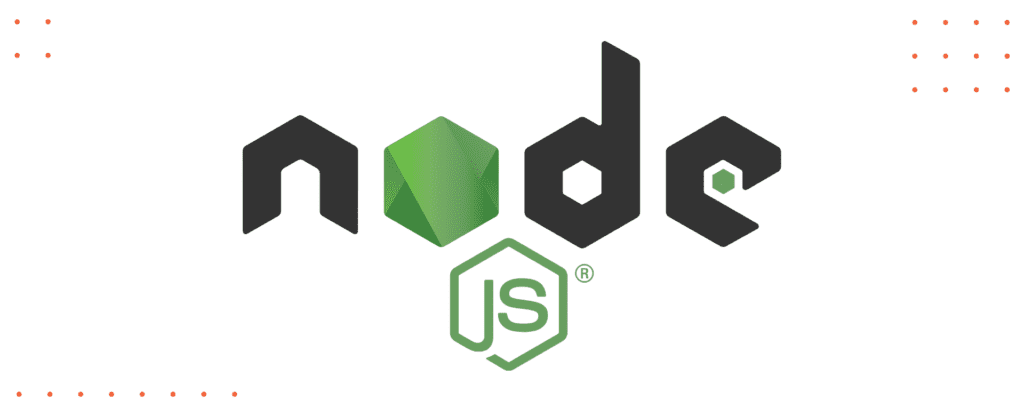
Let’s start by defining Node.js technology. Node.js is an open-source, cross-platform JavaScript runtime environment. Node.js is one of the most-used technologies in web development, mainly due to its key advantages like fast performance, flexible syntax, efficient code sharing, and regular library updates. Let’s take a closer look at the main characteristics and benefits of Node.js below.
- Easy. Starting up with Node.js, it’s a popular option for newbies in web development. Starting is relatively simple because there are many instructions and a big community.
- Scalable. It offers good application scalability. Due to its single-threaded nature, Node.js can efficiently handle a large number of connections at once.
- Robust backend. Node.js is fast and it provides powerful capabilities like networking support.
- Excellent performance. Node.js is built on top of Chrome’s V8 JavaScript Runtime engine, which speeds up code execution. The code implementation is now more simplified and speedy thanks to the V8 engine.
- Cross-platform. Node.js is not only cross-platform but can also be written in a way that allows it to be packed as an executable containing all of its dependencies.
- Maintainable. Since the JavaScript ecosystem can control both the front and back end, Node.js is a simple choice for developers.
- Fast data streaming. Node.js processes data comparatively quickly. Concurrently processing and uploading a file saves a ton of time. As a result, Node accelerates data and video streaming generally.
How does it work?
Because Node.js is event-driven and single-threaded, each request is handled separately by the server’s single thread. In this context, the term “thread” refers to a set of tasks the server must complete. Every time a client request is made, the server responds to it. In this case, the server is Node.js, responding to the request in a single thread.
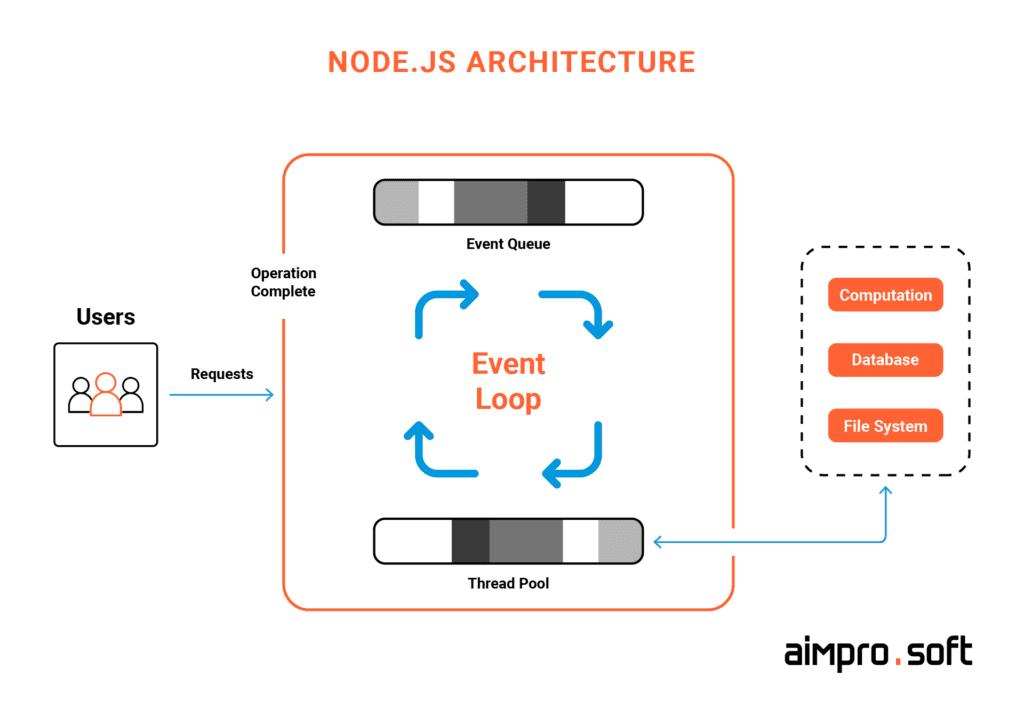
Node.js architecture
Compared to the majority of competing architectures that scale with threads, such as Apache HTTP Server, the different Java application servers, IIS and ASP.NET, and Ruby on Rails, Node’s method of scaling with callback functions uses less memory space to handle more connections. Along with servers, desktop applications also find Node.js with backend to be quite handy. Furthermore, keep in mind that Node apps aren’t just confined to JavaScript. Any language that transpires to JavaScript, such as TypeScript and CoffeeScript, may be used. Node’s extensive package library, which is accessible using the npm command, accounts for a significant portion of its capabilities.
What is the reason for using Node.js?
The primary reason for choosing this backend runtime environment for web development is the speed it offers, which is unmatched by any other technology. The server side and the client side can start the process of communication and data exchange very smoothly and rapidly thanks to the event-driven two-way connection offered by the Node.js technology.
So we got acquainted with the basic principles of Node.js work. Now let’s find out current trends in Node.js development and figure out whether this runtime environment has a future.
The market size of Node.js framework and booming trends in 2023. Does Node.js have a future?
According to StackOverflow research, one of the most popular web technologies utilized both by experienced programmers and newbies is Node.js. Moreover, Node.js is the backbone of at least 30 million websites, if not greater. The runtime environments are favored by high-traffic websites, according to W3Tech. The fact that Node.js has been holding a firm position in the market over the past years and its popularity only keeps growing means that the technology won’t become outdated or irrelevant any time soon. Hence, you will not have to migrate to another framework to keep your software product in trend. Moreover,the average node.js programmers’ salaries will not go up rapidly, which is explained by the fact that the community is steadily growing and there is no deficit of specialists in the market.
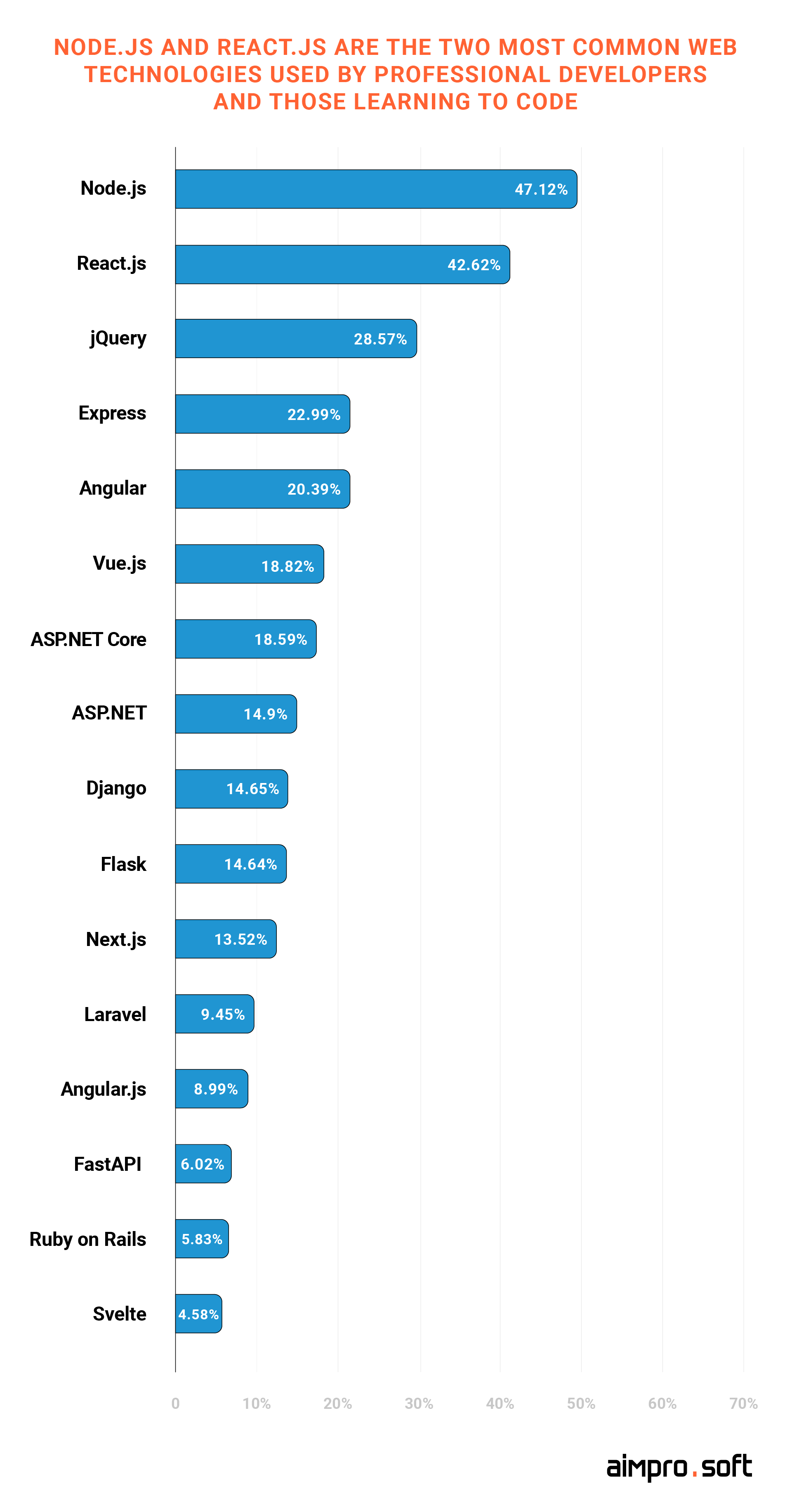
Source: StackOverflow
In addition, you have access to a wealth of pre-made solutions, code on GitHub, and much more, thanks to the contributions of JavaScript programmers. As a result, StackOverflow’s query volume is likewise gradually increasing, expanding the body of knowledge about this technology. Such facts once again confirm that using Node js using as backend technology can speed up development because when developers encounter a problem, they will quickly find a solution, and the development process will not stand still and won’t cause unplanned expenditures.
Reasons to use Node.js for backend in 2023
Let’s find an answer to one important question: is Node.js worth using in 2023, and is it still relevant?
Scalability and contemporary architecture
Due to their capacity to support rapid software scaling and iterative development, microservices are becoming increasingly popular nowadays. Node.js accelerates communication between the components of the applications (microservices’ APIs), which makes it run more quickly. It offers the chance to scale apps without affecting their performance or speed.
Accelerated time to market
NPM (Node Package Manager) hosts 700,000 modules for Node.js. Development time is greatly decreased by using pre-built modules rather than re-coding mundane tasks. Additionally, Node.js Web tribunal statistics show that developers and project managers believe Node.js to be a factor in rising developer productivity. As a result, it aids in the quicker release of products and upgrades. Only 4% of businesses claim that Node has had no influence.
Real-time application development for your business
Programmers can build a real-time web app with node.js quickly. Node.js may be a perfect option when dealing with real-time programs with multi-user capabilities for chat and gaming apps. Because both the server and client sides control the program architecture, synchronization is well-organized and quick. The speed is optimized since it uses the V8 engine, which combines JavaScript with machine code.
Top Node.js development trends in 2023
Node.js has a solid reputation for leading the backend technology market. However, it is essential to consider other related advancements in this field while creating a Node.js project because they may enhance Node.js’s capabilities and explore in what areas Node.js will be applied this year.
Internet of Things (IoT)
In order to better take advantage of microservices, real-time capabilities, and data-centric strategies, most well-known IoT organizations have already begun employing professionals to develop Node.js-based IoT apps. For instance, Skycatch uses Node.js as the backend side to power its specialized drones that capture images of construction sites and convert them into 3D models, a task that would be far more challenging to complete without Node.js. The primary benefit of Node.js is the speedier real-time execution it offers. On the server side, it uses less memory and other resources. Node.js helps programmers to build scalable and successful IoT apps as a result.
MEAN and MERN stacks
In terms of app development, the two preeminent stacks MEAN (MongoDB, Express.js, Angular, Node.js) and MERN (MongoDB, Express.js, React.js, Node.js) will keep their places at the top in 2023. They are solid options for creating single-page, dynamic web apps.
Devoid of hardware and servers
This is one of the most common features of Node.js that decreases expenses and time while boosting developer productivity. Serverless design relieves developers of server maintenance concerns. A serverless design reduces reliance on hardware and servers, which minimizes the cost of development.
Microservices
Independent deployment, scalability, and change are possible with a microservice architecture without affecting other services. Additionally, it enables programmers to construct a single service with just one duty, making testing and deployment more straightforward. Microservices have received particular attention from the Node.js community because of the advantages of their scalability. Because it doesn’t need to operate for very long or store data on disk, Node.js’s lightweight runtime is perfect for creating cloud-native microservices.
GraphQL
GraphQL is an open-source language for APIs that enables query generation and data manipulation. This data-exposing and querying solution is easy to integrate with server middleware and performs admirably in a Node.js project. Using schemas, resolvers, and queries corresponding to the data requirement, developers can leverage this integration to make API calls.
After exploring trends in Node.js development, let’s move on to a topic that still raises questions. Is it worth developing a back end with nodejs, or is this technology also suitable for the front end?
Want to know more about today’s Node.js market? Read our research on the topic.
Is Node.js a back-end or front-end framework?
Node.js has established itself as a back-end technology. However, front-end development can also be done with it. Node.js’ varied advantages make the concept of utilizing it for front-end development seem obvious.
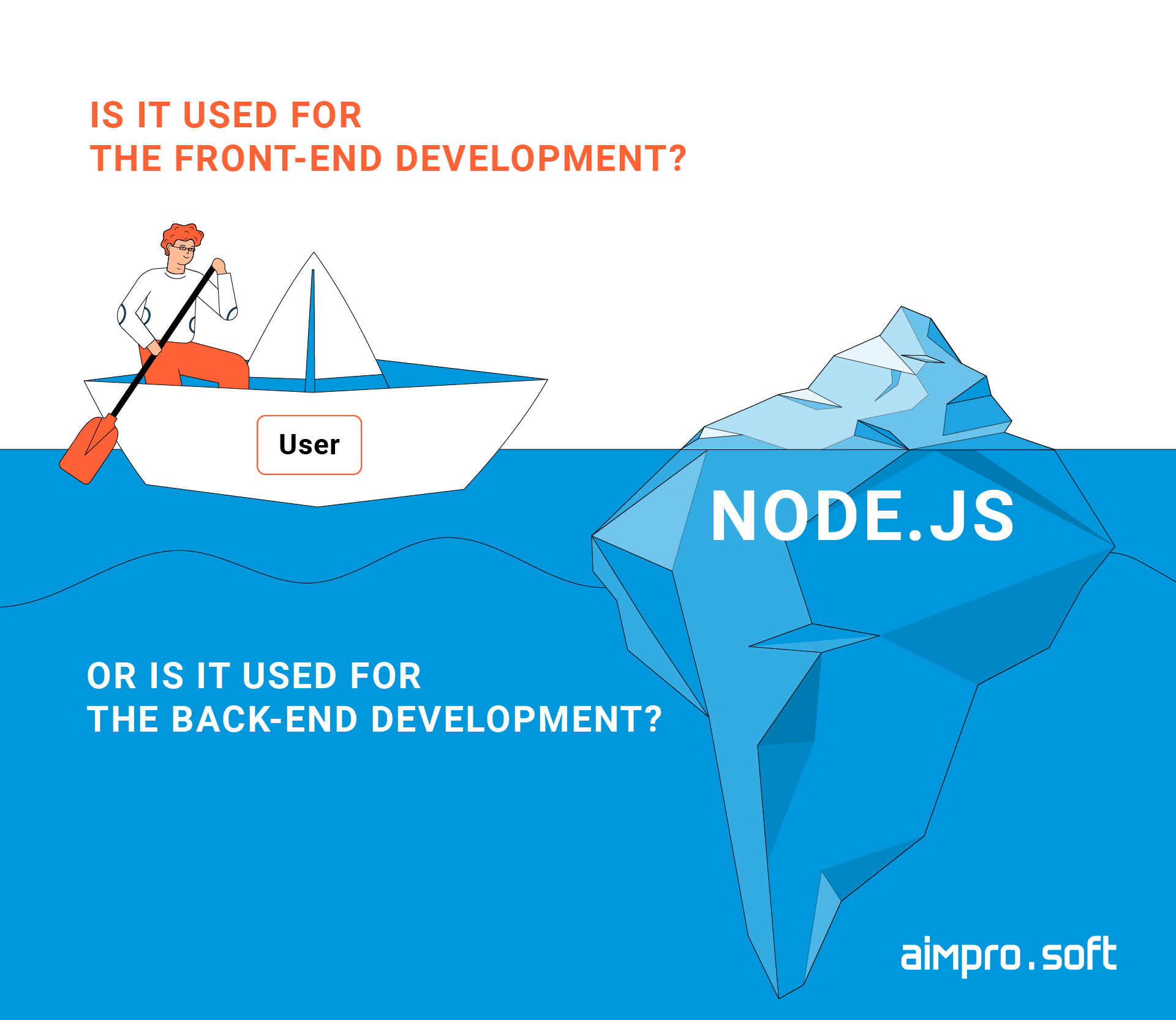
Is it better to use Node.js for the back-end or the front-end?
Using Nodejs for back-end
Node js is a backend runtime environment that gives you the freedom to decide whether to utilize it for front-end or back-end functionality. Both the front-end and the back-end can be written in the same language. Even though the environment is entirely built on the V8 JavaScript engine, it has capabilities that make it simple to run JavaScript files that aren’t even run in the web browser, making it suitable for nodejs back-end development environment.
Using Nodejs for front-end
In contrast, Node.js also has enough tools for automating repetitive processes, such as running code tests and using toolkits, allowing you to use it as a front-end environment and enhance software development. As well, Node.js is mainly used to generate command line tools and scripts that automate processes for frontend development. Developers can use Node.js to build tools that concatenate and minify JavaScript files, or they can write programs that automatically change the version numbers in a project’s package.json file.
Overall, it’s true that most back-end developers utilize Node.js. Its success in this field stems from its scalability, capacity for handling numerous simultaneous connections, and use of JavaScript, a popular language among developers. Node.js is frequently used for the development of web servers, APIs, and other server-side operations. However, you may already draw the ultimate conclusion that, depending on your needs, you can utilize this flexible tool for both front-end and back-end in nodejs operations.
If you want to learn more about how to hire Node.js developers specializing in front and back-end development, check our article on the subject.
Pros and сons of Node.js compared to other back-end technologies
Node.js can be extremely useful when developing applications and web platforms because, as we already know, this technology is used for both the back-end and the front-end, which ultimately speeds up the development process and reduces costs. Let’s talk about other pros and corresponding cons of this runtime environment and what makes it stand out from other technologies.
Pros
Universality
The fact that Node.js runs on so many different platforms like Linux, macOS, and Windows is one of its main advantages. It covers all web browser actions because it is web-based. You may practically deploy the applications you create anywhere, thanks to the Node.js API. Before you can use other platforms for tasks of a different scale, you might have to spend a lot of time rebuilding them. As a result, Node.js helps you save a lot of money when developing applications.
Support from a large community
Node.js is a widely utilized technology that has drawn millions of developers to work on it and take on even the most difficult tasks in a variety of industries, including industry giants like Google and Microsoft. The support of a large and active community is a significant plus because it is always ready to assist with any questions or problems your developers may encounter. This way, accelerated solving of problems won’t delay the development process and cause unpredicted expenditures if you hire offshore node.js developers.
Full-stack development
Initially, front-end development was carried out using JavaScript. But it was compelled to switch to JavaScript on the back-end after Node.js was released. In order to effectively work on both front-end and back-end development with node js, businesses should employ separate development teams. Instead, with Node.js, you could engage a full-stack JavaScript developer who can work well on both the front-end and the backend, helping to decrease costs and simplify deployment.
Scalability
Regarding Node.js’ potential for scaling, the cluster module it includes enables load balancing across several CPU cores. It’s also great news for businesses that Node.js uses a non-blocking event loop approach that encourages improved scalability. Additionally, Node.js enables the management of persistent connections using just a single thread and an event loop to alternate between listening for fresh data and responding to open requests.
Cons
Performance issues with demanding computing tasks
The major flaw in Node.js is its slow processing of CPU-intensive operations. The issue arises when Node.js is presented with a CPU-intensive task: When a demanding request enters the event loop, Node.js uses all of its CPU resources to handle it first before responding to the other incoming requests in the queue. Node.js is not advised for heavy computing because of the slow processing and general latency in the event loop that emerges from this.
Multithreading was, however, added to Node.js in 2018 following the 10.5.0 update. Work threads let you use the same system memory to execute several instances of Node.js in the same process.
Lacking strong library support infrastructure
Node.js also has a serious drawback in that it lacks a robust library support mechanism. Developers must therefore rely on external libraries to assist them with activities that are not covered via the core Node.js library. Furthermore, the absence of a robust documentation system makes it challenging for new users to locate pertinent data that can be used in development.
How is Node.js superior to other technologies?
Every platform has a few distinctive qualities that set it apart from others. Let’s look together at a few characteristics that distinguish Node.js from competing systems.
Facilitates development
Regardless of the language you’ve previously used, switching to Node programming is not too difficult. Node.js is the preferable language even if you’re creating an application for the first time because it is adaptable, scalable, simple to understand and use, lightweight, and has the ability to handle errors effectively.
Performance improvement
Node.js handles concurrent requests with little to no restrictions, outperforming Python and Java in terms of performance. Because they employ a single language across the board, it boosts developer productivity and application performance, hastening the overall development cycle. Additionally, developers are more productive with their work when they have access to better tools and more flexibility.
So, we’ve studied the advantages of Node.js, we’ve explored the basic principles of this technology, and now, it’s time to research which frameworks support Node.js for a back end development.
Best frameworks supporting Node.js
Quality enterprise Node.js frameworks have been created over time by skilled software developers, making it simpler to start Node.js projects. The best thing is that each of these Node.js frameworks can scale, accelerate development, and enhance project performance. So let’s examine the features and usability of the top frameworks.
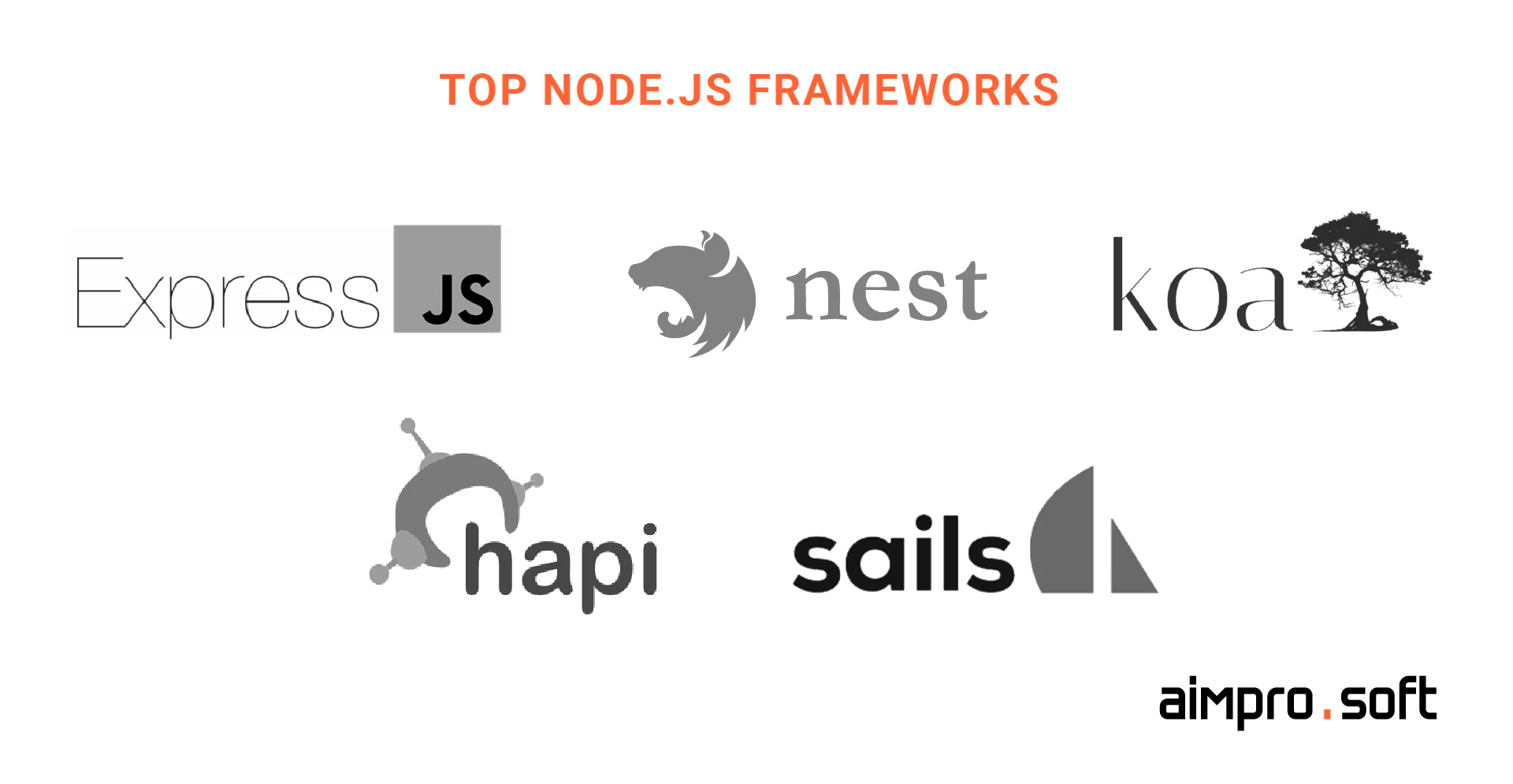
Best frameworks supporting Node.js
NestJS
The concepts of controllers, providers, and modules are the foundation of NestJS. More specifically, the latter are clusters of logical code units. This highly typed JavaScript superset, TypeScript, is used in this extendable open-source framework for Node.js. As a result, If you use Node js for backend, it will speed up development significantly. When working with a microservice architecture, NestJS is most helpful.
Express.js
This framework is speedy, has a simple design, and has a large number of HTTP helpers. Developers that do not have a time-consuming and expensive development procedure favor it. Additionally, it is the greatest method for creating web, mobile, and API apps.
Hapi
Users can access the well-known open-source web application framework without charge. It will guarantee the most secure features and includes built-in plugins. The REST API, desktop applications, and proxy servers, to name a few, were all developed using one of the best Node.js frameworks. Additionally, it can eliminate the issue of unapproved middleware.
Sails.js
The Sails.js MVC (model-view-controller) framework for Node.js upholds the “convention above configuration” concept. This framework, which draws influence from the well-known Ruby on Rails web framework, allows you to quickly construct REST APIs, single-page apps, and real-time (WebSockets-based) apps. It extensively uses code generators, which enable you to construct applications with little to no coding, especially for routine tasks that may be scaffolded.
Koa.js
Koa, one of the most popular Node.js frameworks, is perfect for building different web services or APIs. Additionally, it normalizes Node flaws constructively. With the help of this framework, you may handle several types of content that are given to consumers at the same URL, including translating web pages, customizing the content on e-commerce sites, having various picture formats, and more.
Transferring your project to Node.js: tips and nuances
So it’s time to discuss how to migrate your project to Node.js.Together, let’s explore the primary motivations for migrating so that you can decide if it’s worthwhile. We’ll also look at some crucial tips for making a successful migration based on Aimprosoft’s experience.
When is it worth migrating?
Outdated tech stack
It’s possible that the project was built using an outdated tech stack when it was first created. For instance, the project might have been developed using an older Java library or an old Java version, which is particularly challenging to maintain because so few people in the market are familiar with the technology. Finding experts who will assist with this project will be costly and challenging. As a result, switching to Node.js is easier, and with the current technology, a thriving community, and a vast pool of professionals, it will also be simpler to manage.
Front-end is written in JavaScript
If your front-end was written in JavaScript, that’s a reason to think about transferring your project to Node.js. As we discussed earlier, many Node.js experts are full-stack developers. It is much better for your business to hire someone who can support front-end and backend simultaneously, which speeds up the development process and saves you money.
The above reasons for migration are real-life samples of what kind of requests clients came to our company with. If the project was created 10-15 years ago, when Java was used for web development, and now it’s already hard to maintain, it’s easier to switch to more up-to-date technology.
Two basic tips that can reduce the risk of a failed migration
Communication between the old team and the new team
When hiring engineers to migrate your project to Node.js, you should ideally give them access to technical documentation on the existing project that will be transferred or let them communicate with a technical specialist who is familiar with the product’s functionality. Additionally, before beginning the migration process, developers might need to spend some time assessing the current project, the components that make it up, and the interconnections among those components.
Testing is mandatory
Sometimes it happens that company owners neglect to test after the migration, but the developers will rewrite the old code with the brand new code, so testing is mandatory. The team must have testers who must carefully check whether the new code meets all the requirements in order to avoid serious failures.
These are the tips one of our technical leaders suggests based on his and our company’s collective experience over the years. These recommendations will significantly lower the likelihood of a failed migration, and the final outcome will meet your expectations.
You can reach us, and we will find the best solution for you based on your project requirements.
CONTACT USAimprosoft can be your reliable Node.js provider
So, we’ve analyzed such technology as Node.js, and we studied all the pros and cons and the relevance of this runtime environment. So, if you are thinking of using this technology for development and looking for the right team of specialists to assemble, you can always contact Aimprosoft for help. Here are some reasons why we can be the ideal choice:
- 17+ years in the IT industry
- 600+ released projects
- 80% of our customers come back to us to work on new projects
- We have experience in 20+ domains, including education, e-commerce, healthcare, real estate, retail, telecom, and IoT
- We currently have over 100 clients from various regions all over the world, including ones from the U.S., Europe, Canada, and Asia
- At least 80% of the engineers in our company are familiar with JavaScript, and 50% of our JS developers are full-stack experts.
The technologies we use will very likely be perfect for your future Node.js product requirements. Explore our core JS technologies:
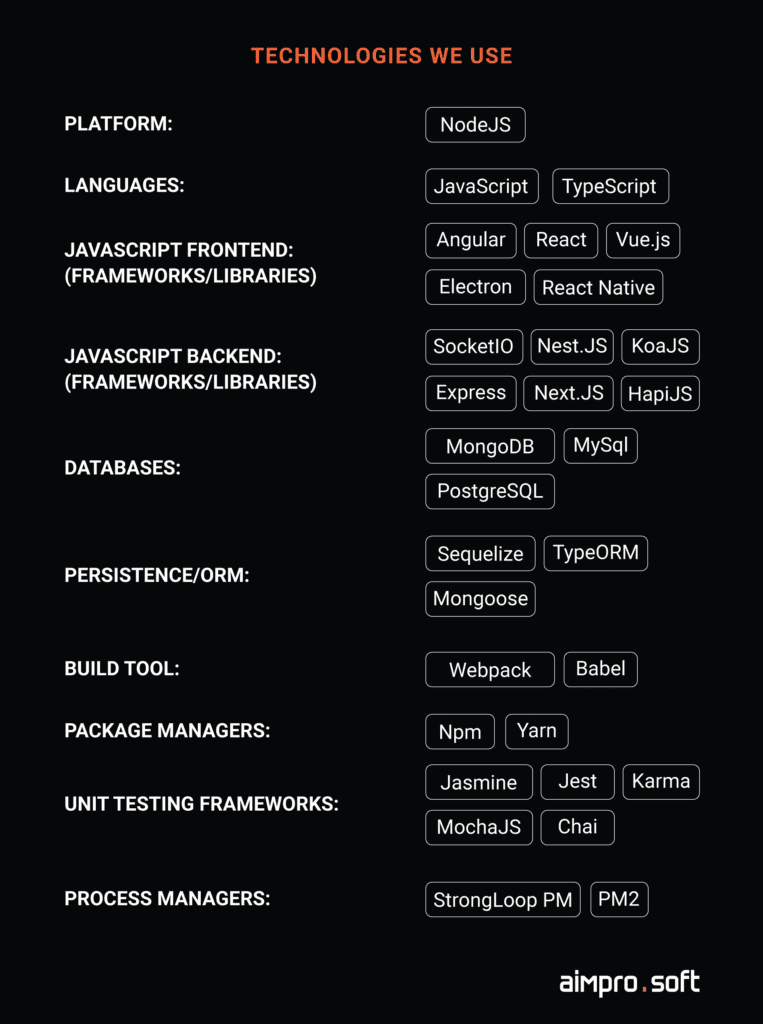
JavaScript technologies we use
Our Node.js portfolio
We’ve been working with Node.js since its very first versions, so we can boast of successfully released projects on this platform, and here are a few examples of them:
Pr.business
The client came to us with the request to create a local-search directory from scratch that would be capable of aggregating information about local SMBs and managing digital listings from Foursquare, Yelp, Google my Business, and others. As a result, our developers were successful in creating a digital hub for PR and marketing firms focused on the B2B industry. Its objective is to keep track of a company’s online reputation. The system gathers evaluations and comments from all widely used platforms. have a flexible search interface and adaptive design. Users can review and verify listings for various commercial products.
Tech stack: Node.js, Java, Redis, Docker, Kubernetes, Google Cloud Platform, Angular, React, Responsive design, Schema.org, Prerender.IO
Centralized healthcare platform
The client came to us with a mere idea and preferences regarding the tech stack. The requirements were to develop a web product that would allow dentists to post their cases using a digital prescription, choose the lab from the list to complete their cases, pay and rate labs, and much more. Our developers have developed an incredible web-based platform to enable seamless collaboration between dental labs and practitioners. In return, labs get hands-on tools to create accounts, view and offer dental cases, interact with dentists, and get the data they need.
Tech stack: Node.js, PostgreSQL, Hapi, Sequelize, Redis, React, Webpack, AWS EC2, AWS S3, PM2, IntelliJ IDEA, Git
B2B portal for waste collection services
The client came to us with a mere concept of such a project; hence, it was a development from scratch. As an outcome, our programmers have developed a platform is designed for regular businesses and garbage haulers. It offers a market, the option to bid, the ability to select the best offer and then to sign a contract, as well as the capacity to control the process for the duration of the contract.
Tech stack: Node.js, Java, PostgreSQL, AWS S3, Spring, Spring MVC, Spring Security, Spring Boot, Hapi, Domain Object Security (ACLs), OAuth, Hibernate, Sequelize ORM, Bluebird, Enzyme, React, Reflux, Redux-Saga, Bootstrap, Webpack, Stripe, Google Maps, Karma
Conclusion
To summarize, Node.js has the world’s most significant open-source package repository and the greatest developer community, both of which will positively impact your project by facilitating quicker and easier development. Getting started with Node.js can be very easy if you put your development in good hands. You can always contact Aimprosoft, and we will offer you the best solution for your future Node.js project.
What applications can Node.js be used for?
The general rule for using Node.js is to construct real-time apps that produce a lot of I/O operations, which in practice means applications anticipating a lot of traffic. Usually, these are applications such as:
- Apps for gaming
- Social media applications
- Text messengers
- Tools for project management
- Apps for streaming audio and video
- IoT gadgets and applications
What are the most famous Node.js backend examples?
Why is Node.js popular among startups?
By enabling developers to utilize the same programming language for both the front-end and the back-end with Node js, businesses may avoid the significant time spent and expenses of engaging multiple developers to the project. Node.js is also incredibly quick in cases involving multiple users and data, which makes it ideal for processing, consuming, and managing data in real-time.




